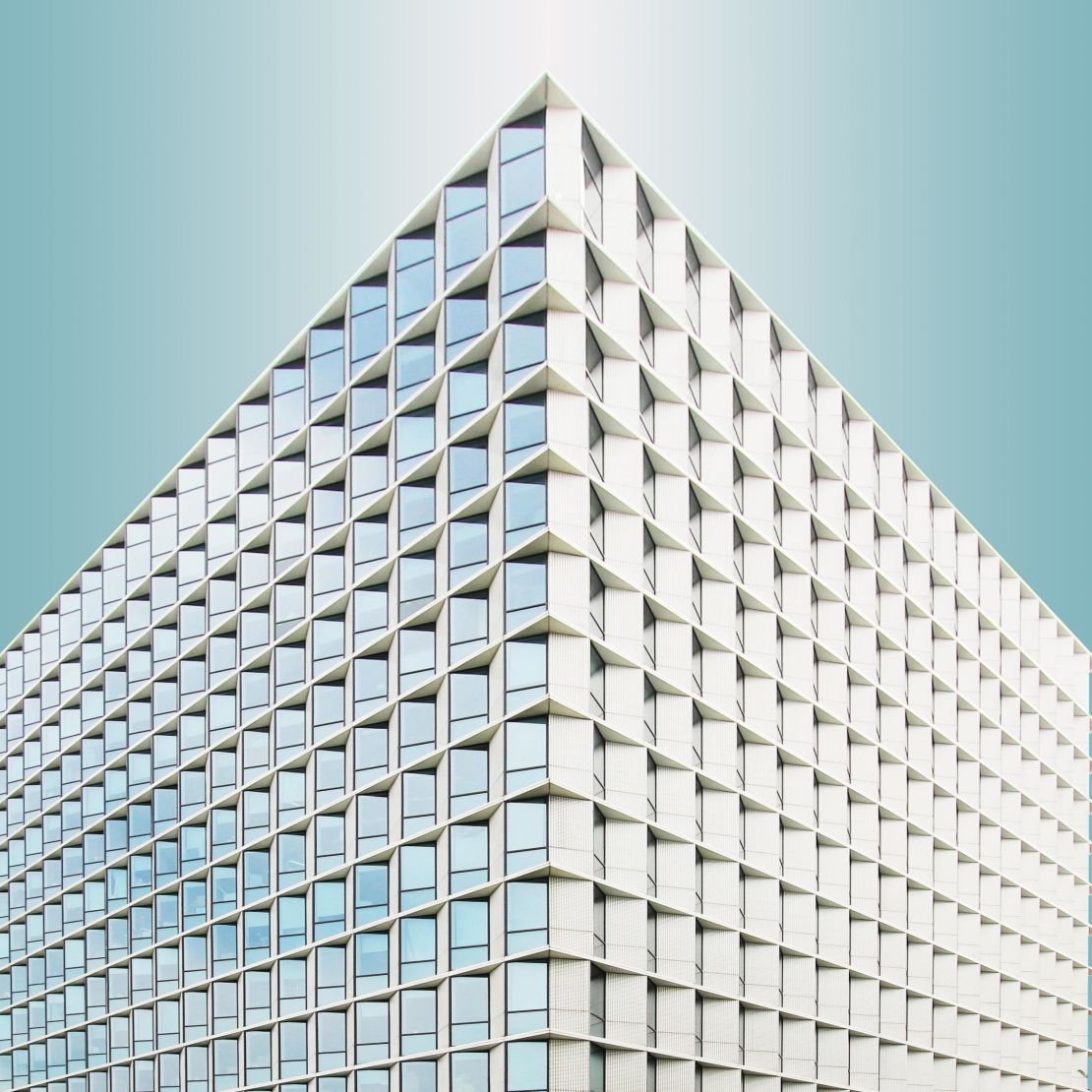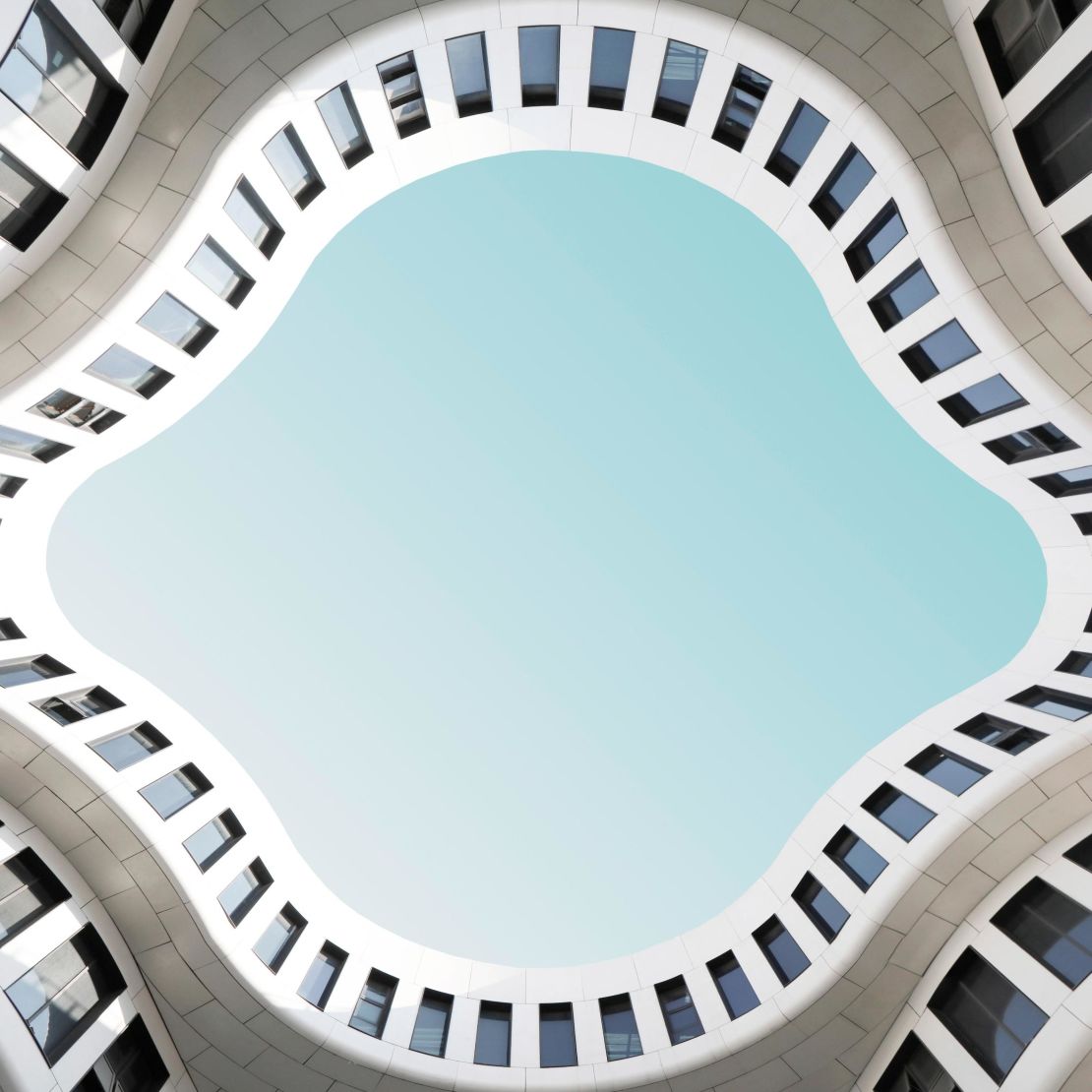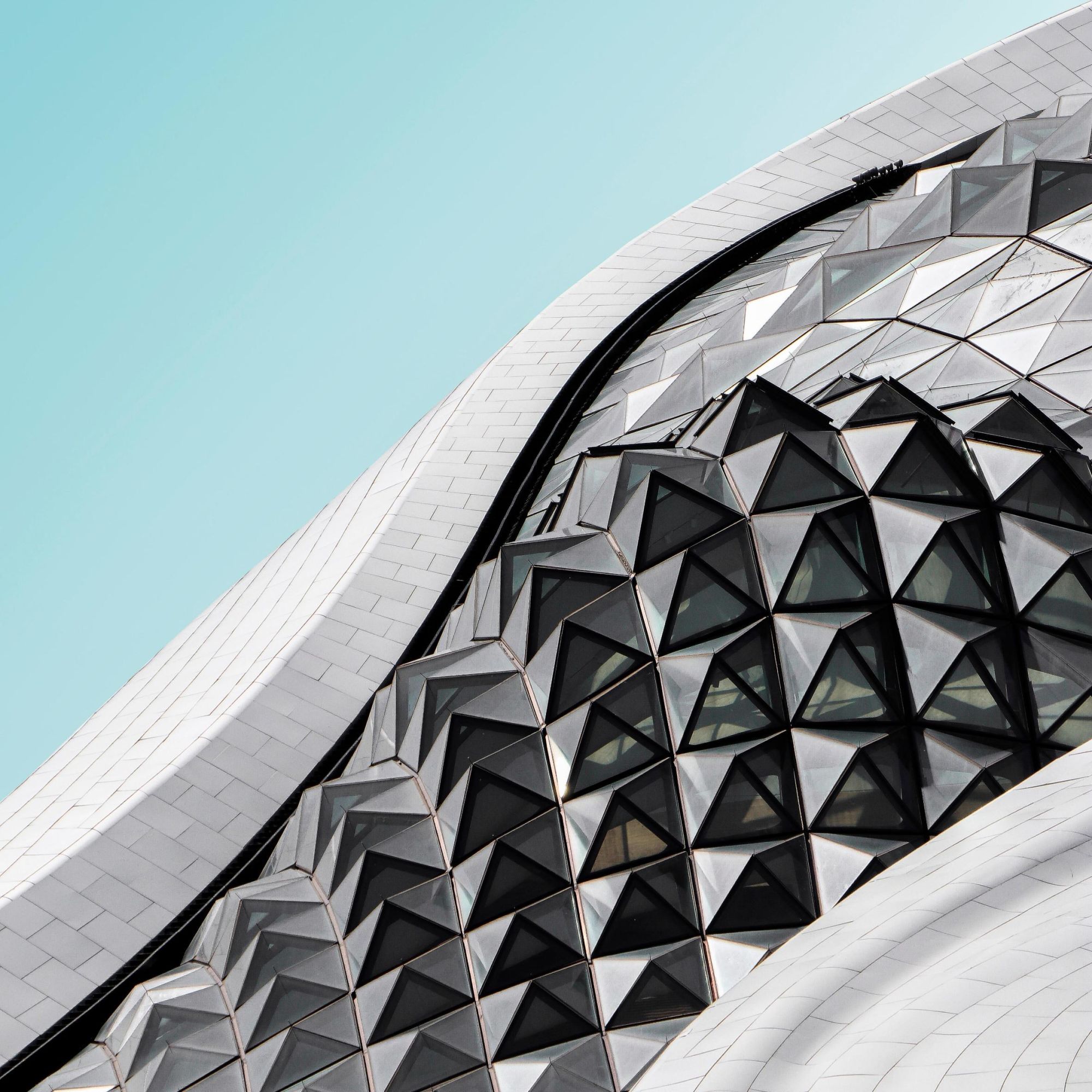An arched skyscraper in Suzhou, a museum in Guangzhou composed of Tetris-like blocks and a Shanghai theater with a bronze facade that moves constantly throughout the day – these are just some of the bold Chinese buildings that have attracted attention and, for some, raised eyebrows in the past decade.
In Kris Provoost’s striking images, however, China’s unusual modern architecture takes on a new, surreal beauty. By digitally removing the surrounding cityscape and replacing it with a bright blue backdrop (the type rarely associated with the country’s skies), the Belgian photographer hopes to portray his subjects in a fairer light.
“In reality, these buildings are probably not as pretty as they look in my photographs because of the current conditions in China,” Provoost said in a phone interview from Shanghai, where he works as an architect with the firm GMP Architekten.
China, beautifed
“The country is still developing like crazy, so there’s a lot of pollution and construction going on, with ugly buildings surrounding (the ones I photograph). But I’m trying to make it only about these ‘objects.’
“And if I wanted a blue-sky day to photograph on, I’d be waiting forever,” he added.
China, beautified
By presenting China’s buildings outside the context of the cities they inhabit, Provoost encourages viewers to focus on patterns, geometry and finer details that may otherwise go unnoticed. The photos’ unconventional angles and close-up composition offer a new perspective to those already familiar with the structures.

While admitting that he presents an idealized vision of architecture often ridiculed for promoting “weird” shapes and attention-grabbing designs (indeed, his photo collections go by the names “Beautified China I & II”), Provoost sees his work as a celebration of the country’s modern buildings. In any case, fitting in with the surroundings is not always a priority for designers, the 30-year-old explained.
“Some (foreign architects) create proposals for one city in China and then, a year later, when it’s not built, they just propose it for another city,” he said. “Architects will always say it’s about context, but with this kind of iconic architecture, you’re building in order to stand out.”

Provoost’s first collection featured some of the country’s most recognizable buildings, such as Beijing’s CCTV Headquarters and the Guangzhou Opera House. But the follow-up series, published for the very first time on CNN, focuses on standout architecture in lesser-known cities like Nanning, Harbin and Ningbo.
“If I can shed a bit of a spotlight on the other cities, then maybe people can learn a little bit about what’s going on there,” he said, adding that he thinks Chinese architecture is often misunderstood. “People might think the buildings are out of scale, but maybe they haven’t been to China. If you roam around the streets (of these cities), you see that the scale is completely different.”
A new aesthetic
Most of the structures featured in Provoost’s two series were completed in the build-up to – or the years following – the Beijing Olympics in 2008. This period of booming construction saw cities across China commission high-profile landmarks, many of which were designed by foreign architects.

But in the wake of a 2016 government directive calling for an end to “bizarre” and “odd-shaped” buildings, there appears to be less appetite for experimental designs. Provoost’s images capture a moment in time – one that may soon be coming to an end.
“It was a flamboyant decade that is, now, totally fading,” he said. “These buildings will stand for many more years or decades, but there will be fewer and fewer of them. It has already started in the ‘first-tier’ cities, like Beijing and Shanghai, where they are becoming more aware that they need to respect their heritage. Instead of just wiping out (old buildings), they now restore them.”

Bad news, perhaps, for future installations of the “Beatified China” series. But as an architect who has worked in China for eight years – including stints at firms headed by “starchitects” Zaha Hadid and Ole Scheeren – Provoost welcomes the shift in attitudes.
“I think it’s great,” he said. “I’m from a European city, where heritage is everything, and it can go to extremes – they don’t let you touch anything. But here (in Shanghai), there’s an interesting mix of old and new that makes a nice space for people.”
“Beautified China,” published by Lannoo, is available now.




















